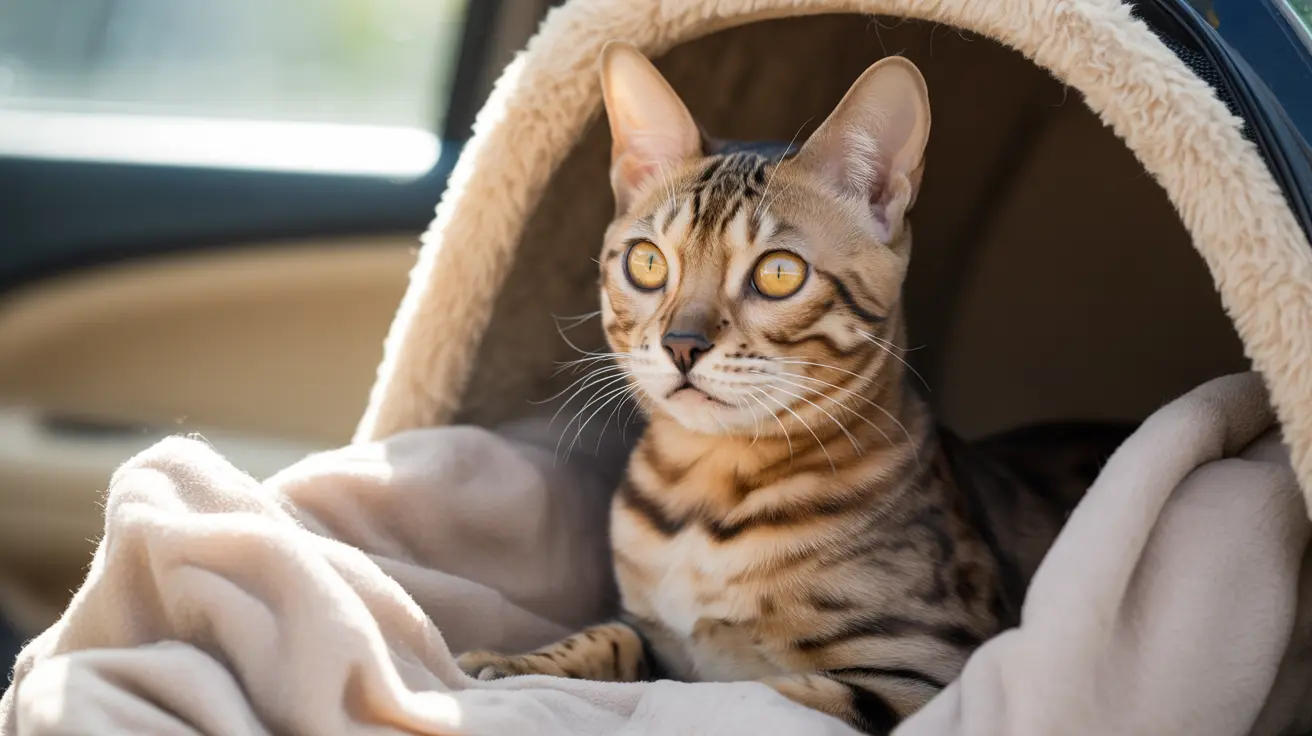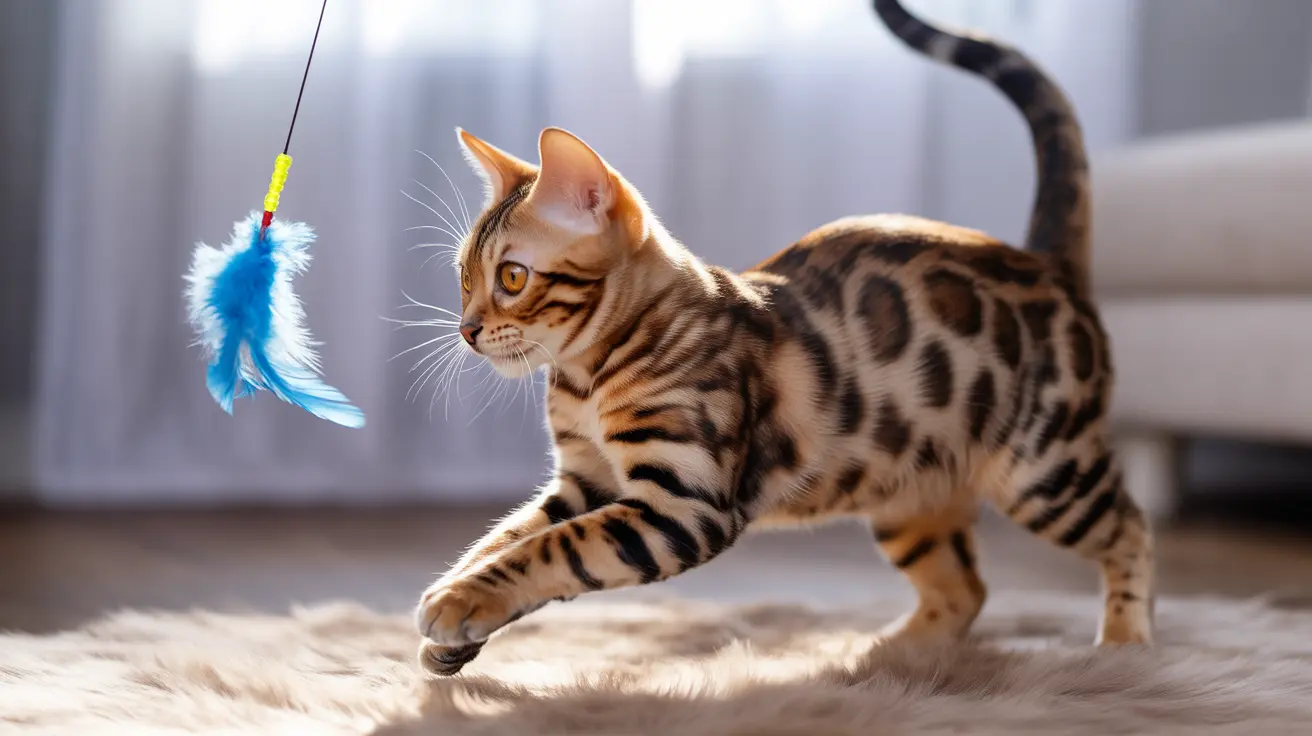How to Prepare a Cat for Car Trips: A Complete Guide for Safe and Stress-Free Travel
Traveling with your feline companion can transform from a stressful ordeal into an enjoyable adventure with proper preparation and the right approach. While cats are creatures of comfort who value their territory and routines, they can actually make excellent travel companions when their needs are thoughtfully considered. The key to successful car travel with cats lies in understanding that preparation is everything – from gradually acclimating your pet to their carrier weeks before departure to ensuring you have all the necessary safety equipment and comfort items.
Whether you're planning a weekend getaway, relocating to a new home, or need to transport your cat for veterinary care, this comprehensive guide will walk you through every aspect of how to prepare a cat for car trips. From selecting the right carrier and practicing short drives to managing travel anxiety and packing essential supplies, you'll learn proven strategies that prioritize your cat's safety and well-being while making the journey as smooth as possible for both of you.
Understanding When Car Travel is Right for Your Cat
Before diving into preparation techniques, it's important to assess whether car travel is the best option for your specific situation and cat. Cats that are not accustomed to car travel should ideally stay home during vacations, as the stress of unfamiliar environments can be overwhelming. Travel-experienced cats typically belong to owners with campers or secondary residences who have gradually introduced their pets to regular journeys.
Car travel offers significant advantages over other transportation methods because you maintain complete control over the environment, timing, and stops. Unlike air or train travel, you can adjust the temperature, take breaks as needed, and respond immediately to your cat's needs. This makes car travel the most recommended option for feline transportation, especially for distances that can be covered in a day or with planned overnight stops.
Choosing the Right Carrier and Safety Equipment
Selecting the Perfect Carrier
The foundation of safe car travel begins with choosing an appropriate carrier. Your cat will spend considerable time inside their carrier, so comfort and safety are paramount. Look for carriers with both front and top openings for easy access, as these designs allow you to reach your cat more easily during the journey and make loading less stressful.
The carrier must be large enough for your cat to stand, move around, and curl up comfortably, but not so large that they'll be thrown around during sudden stops or turns. Sturdy construction is essential – the carrier should be able to withstand the forces of travel while keeping your cat securely contained. For air travel compatibility, consider carriers that meet airline requirements, even if you're currently only planning car trips.
Safety Restraint Systems
Never allow your cat to roam freely while the car is moving, as this creates serious safety risks for both your pet and passengers. The carrier should be positioned securely in the car, ideally on the floor between your legs if you're the passenger, or on your lap or the middle seat in the back for better restraint and comfort. Some carriers can be secured using seat belts, which provides additional stability during the journey.
For cats that travel frequently, consider investing in a quality harness system that can be attached to the seatbelt. This allows for slightly more movement while maintaining security, but should only be used with cats that are completely comfortable with harness wear.
Gradual Preparation and Training Process
Carrier Acclimation at Home
The most critical aspect of how to prepare a cat for car trips is making the carrier a familiar, comfortable space long before travel day. Start by leaving the carrier open in your home where your cat spends time, allowing them to explore it naturally. Feed your cat inside the carrier to create positive associations – this transforms the carrier from a scary transportation device into a safe dining space.
Place familiar bedding, favorite blankets, or a piece of your clothing inside the carrier to make it smell like home. Some cats benefit from having the carrier serve as an everyday sleeping spot, which completely eliminates the fear response when it's time to travel. This process should begin weeks before your planned trip, not days.
Practice Drives and Short Trips
Once your cat is comfortable spending time in the carrier at home, begin practice drives. Start with very short trips – perhaps just sitting in the car with the engine running, then progressing to drives around the block. Gradually increase the duration of these practice sessions, always ending on a positive note.
During practice drives, maintain a calm environment in the car. Keep music low, avoid sudden movements, and speak to your cat in soothing tones. These practice sessions help your cat understand that car rides don't always lead to the veterinarian's office and can actually be pleasant experiences.
Managing Travel Anxiety and Stress
Recognizing Signs of Stress
Understanding your cat's stress signals allows you to respond appropriately during travel. Common signs include excessive vocalization, drooling, panting, attempts to escape the carrier, or unusual quietness in normally vocal cats. Some cats may also experience motion sickness, which can manifest as vomiting or lethargy.
Covering the carrier with a familiar blanket can provide a cozy, cave-like environment that many cats find comforting. This reduces visual stimuli that might increase anxiety while maintaining proper ventilation. The familiar scent of the blanket also provides additional comfort during the journey.
Natural Calming Solutions
Avoid sedating your cat without veterinary advice, as sedation can create additional risks during travel. Instead, consider natural remedies like flower essences, CBD oil specifically formulated for cats, or pheromone spray. These products can help reduce anxiety without compromising your cat's ability to respond to their environment.
Pheromone products that mimic the calming pheromones mother cats produce can be particularly effective. These can be sprayed on bedding or used as plug-in diffusers in your home during the preparation phase. Some cats also respond well to calming treats or supplements, but these should be tested well before travel to ensure they don't cause digestive upset.
Essential Packing and Preparation
Documentation and Identification
Always pack medical documents including current vaccination records, especially rabies certificates. For interstate or international travel, additional documentation may be required. Ensure your cat wears a collar with an ID tag containing your current contact information, as this provides immediate identification if separation occurs.
Consider having your cat microchipped before travel, as this provides permanent identification that can't be lost. Keep a recent photo of your cat on your phone, which can be invaluable if you need to create missing pet flyers or provide identification to authorities.
Food, Water, and Feeding Guidelines
Do not feed your cat during the trip or within four hours before departure to avoid accidents and motion sickness. This fasting period helps prevent vomiting and reduces the likelihood of accidents in the carrier. For extended travel over five hours, you may provide small amounts of water, but avoid large meals until you reach your destination.
Pack enough of your cat's regular food for the entire trip plus extra days, as sudden diet changes can cause digestive upset. Bring familiar water when possible, as some cats are sensitive to changes in water taste and may refuse to drink, leading to dehydration.
Comfort and Emergency Supplies
Pack favorite toys, familiar bedding, and comfort items that smell like home. Include a basic pet first aid kit containing items like gauze, tape, antiseptic wipes, and any medications your cat takes regularly. A portable litter box is essential for longer trips, though many cats prefer to wait until they're in a stationary, private location before using it.
Bring cleaning supplies including paper towels, wet wipes, and odor-eliminating spray in case of accidents. Pack waste disposal bags and consider bringing pee pads to line the carrier bottom, covered by a blanket to absorb any accidents while maintaining comfort.
Managing Rest Stops and Breaks
Safe Stop Procedures
During rest stops, always take your cat along rather than leaving them in the car. A car can reach dangerous temperatures quickly, posing serious health risks, and there's also the risk of theft. If your cat needs to be let out of the carrier, ensure they're wearing a harness and leash, as even indoor cats can become frightened and bolt in unfamiliar environments.
Choose rest stops carefully, avoiding places where animals are not permitted, especially locations with open food buffets or strict hygiene policies. Many rest areas have designated pet relief areas that provide safe spaces for pets to stretch and relieve themselves.
Leash Training Preparation
Train your cat to be comfortable on a leash before travel, as they must remain controlled throughout the entire trip. Start leash training at home well before departure, beginning with just wearing the harness indoors for short periods. Gradually progress to supervised outdoor time in secure areas like a fenced yard.
Remember that cats must not roam freely during the entire vacation, so leash comfort is essential not just for rest stops but for the entire duration of your trip. A well-fitted harness should be snug but not restrictive, allowing normal movement while preventing escape.
Special Considerations for Extended Travel
Vehicle Environment Setup
Maintain a comfortable temperature in the car, keeping it cool and well-ventilated. Position the carrier away from direct sunlight and air conditioning vents that might create drafts. Some cats prefer dimmer lighting, so consider window shades if your cat seems stressed by bright sunlight.
Keep noise levels low and avoid sudden loud sounds like honking or aggressive music. Classical music or nature sounds can be calming for some cats. If traveling with multiple people, designate one person as the primary cat caretaker to provide consistent comfort and monitoring.
Overnight Accommodations
Confirm that your accommodations allow cats before booking. When you arrive, immediately set up a quiet space with food, water, litter box, and familiar items. Allow your cat time to adjust to the new environment before exploring further. Some cats may hide initially, which is normal behavior in new surroundings.
Keep your cat's routine as consistent as possible, feeding at regular times and maintaining familiar bedtime rituals. Bring a favorite blanket or bed that smells like home to help your cat feel secure in the temporary accommodation.
Frequently Asked Questions
How long before a trip should I start preparing my cat for car travel?
Begin preparing your cat at least 2-3 weeks before your planned trip. This allows sufficient time for carrier acclimation, practice drives, and addressing any anxiety issues that arise. For cats with severe travel anxiety, start preparation even earlier and consider consulting with your veterinarian about additional support strategies.
Can I give my cat food or treats during long car rides?
No, avoid feeding your cat during the trip or within four hours before departure to prevent motion sickness and accidents. For trips longer than five hours, you may offer small amounts of water, but wait until you reach your destination before providing a full meal. This fasting period significantly reduces the risk of vomiting and carrier accidents.
What should I do if my cat has an accident in the carrier during travel?
Pull over safely as soon as possible to clean up the accident. Remove any soiled bedding and clean your cat if necessary using pet-safe wipes. Replace the bedding with clean materials and ensure your cat is comfortable before continuing. This is why packing extra bedding and cleaning supplies is essential for any car trip with cats.
Is it safe to let my cat out of the carrier during rest stops?
Only let your cat out if they are wearing a properly fitted harness attached to a leash and you're in a secure area. Even indoor cats can become frightened and escape in unfamiliar environments. Many experienced travelers recommend keeping cats in carriers during stops unless absolutely necessary, as the risk of escape is significant.
How can I tell if my cat is experiencing motion sickness?
Signs of motion sickness include excessive drooling, vomiting, lethargy, loss of appetite, and excessive vocalization. Some cats may also pant or show signs of distress like trying to escape the carrier. If you notice these symptoms, take a break from driving, ensure proper ventilation, and consider shorter travel segments with more frequent stops.
What temperature should I maintain in the car when traveling with my cat?
Keep the car cool and comfortable, typically between 65-75°F (18-24°C). Cats can overheat quickly, especially when stressed, so err on the cooler side. Ensure good ventilation but avoid direct air conditioning flow on the carrier. Never leave your cat unattended in a car, as temperatures can become dangerous within minutes.
Should I consider sedation for my anxious cat during car travel?
Avoid sedating your cat unless specifically recommended by your veterinarian, as sedation can create additional health risks during travel. Instead, try natural calming solutions like pheromone sprays, calming treats, or familiar comfort items. If your cat has severe travel anxiety, discuss safe alternatives with your vet well before your travel date.
Conclusion
Successfully preparing a cat for car trips requires patience, planning, and a deep understanding of your feline companion's needs. The investment in proper preparation – from gradual carrier acclimation to practice drives and packing the right supplies – pays dividends in reduced stress for both you and your cat. Remember that every cat is different, and what works for one may need adjustment for another.
The key to how to prepare a cat for car trips lies in starting early, maintaining consistency, and prioritizing your cat's safety and comfort above all else. With proper preparation, many cats can learn to tolerate or even enjoy car travel, opening up new possibilities for adventures together. Take the time to prepare thoroughly, and you'll create the foundation for many successful journeys with your feline travel companion.






